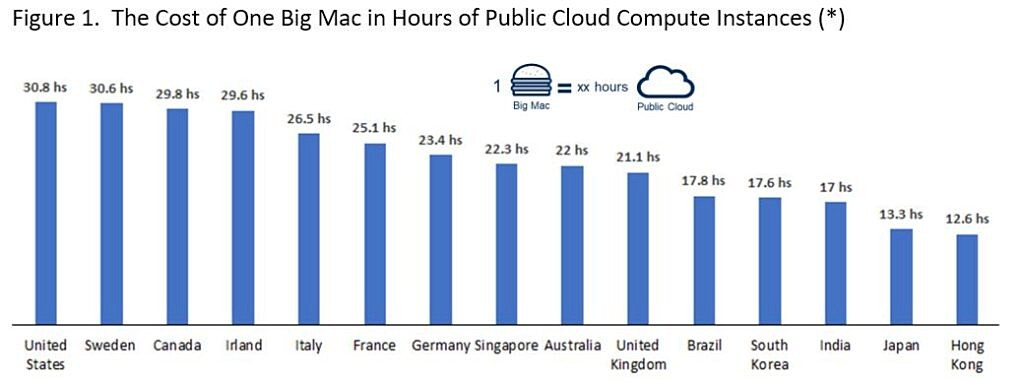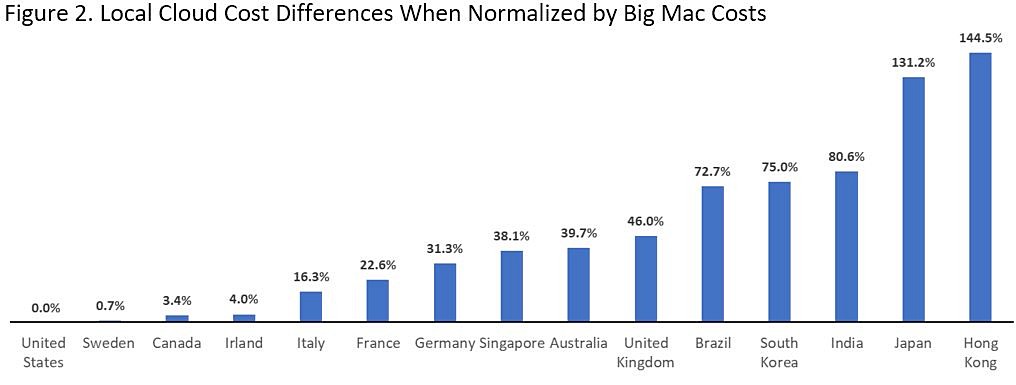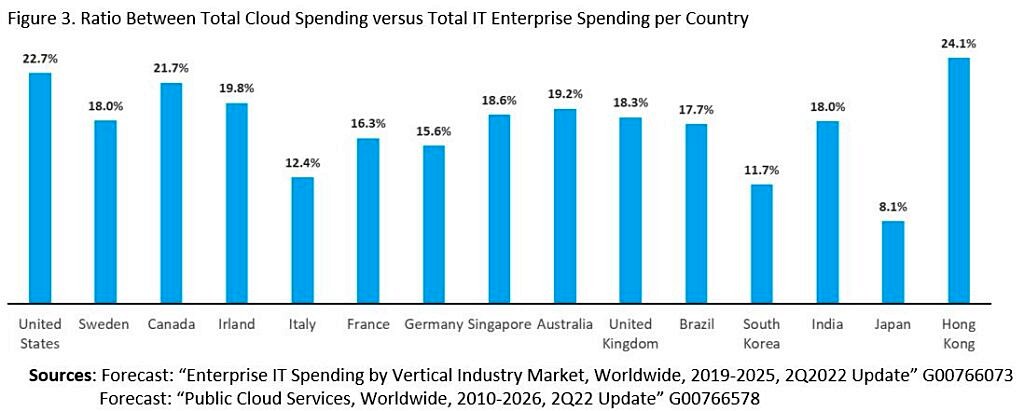Managing cloud costs is a multifaceted, complex problem – a wide variety of cloud options, features, and possibilities with cost implications usually reveal only the tip of the iceberg since some cloud cost aspects continue hidden away from most users.
One of these hidden cloud cost aspects that are often ignored by global IT leaders is that “every country has a different cloud cost”. As each country has a unique set of attributes such as Purchase Power Parity (PPP), local governmental incentives, local constraints (e.g., energy, physical spaces, or telecom availability), and cultural, economic, and political aspects impacting local IT spending, local cloud costs also have significative differences among countries.
To illustrate this phenomenon, we did the following exercise. We compared the local public cloud costs versus local Big Mac costs in 15 countries. Actually, we have calculated which would be the local cost of “compute instances” in the public cloud (on-demand, average) in terms of “computational hours” that would be required to buy one Big Mac in each country. The results are in Figure 1 below:
Figure 1. The Cost of One Big Mac in Hours of Public Cloud Compute Instances (*)

Analysing these cloud cost differences in terms of percentage, we have:
Figure 2. Local Cloud Cost Differences When Normalized by Big Mac Costs


Certainly, these local cloud cost differences represent only one reason among several other reasons that would explain why countries have so many differences in terms of cloud adoption.
One way, among the several other ways to analyze cloud adoption in countries, is looking at the ratio between the total Cloud Spending and the total IT Enterprise Spending. In most cases, this ratio provides a reasonable and interesting insight, and we did this exercise for the countries mentioned above. See in Figure 3 the results.
Figure 3. Ratio Between Total Cloud Spending versus Total IT Enterprise Spending per Country

By comparing the local cloud cost differences and the cloud penetration numbers above, is easy to notice that cloud costs alone cannot be used to explain the cloud adoption levels in a specific country since multiple other aspects and forces are also impacting these results.
However, a more profound understanding of local cloud costs can be extremely valuable and useful when we are planning to implement cloud infrastructures around the world. After all, although the world is not equal, most IT and business goals are.
First posted on Gartner Blog Network





